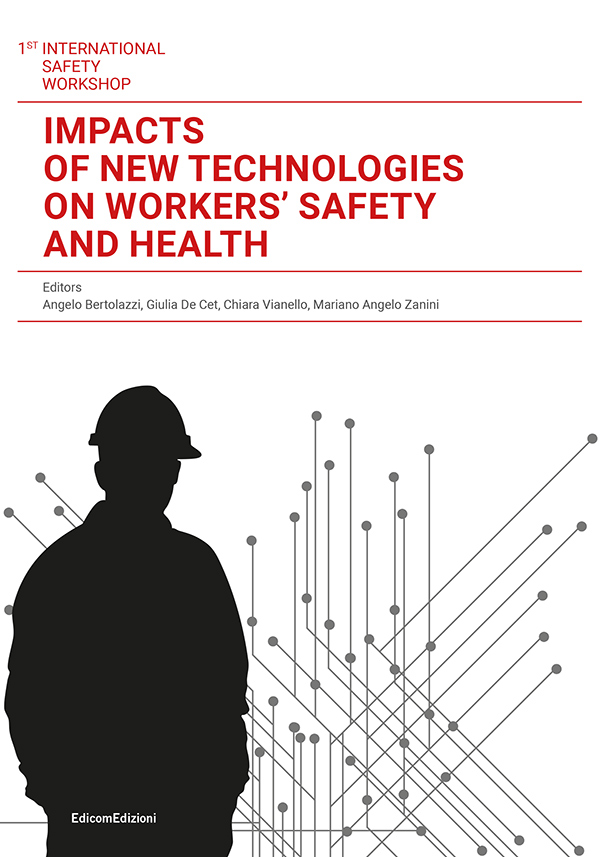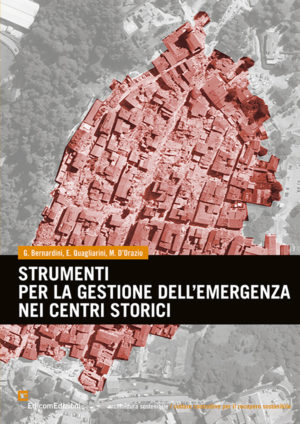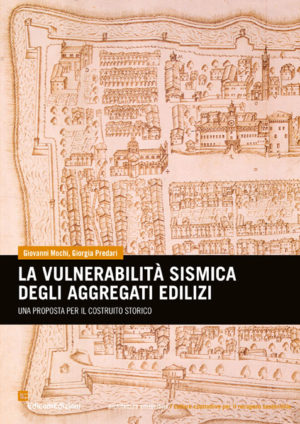Impacts of New Technologies on Workers’ Safety and Health
16,00€
1st International Safety Workshop
Editors
Angelo Bertolazzi, Giulia De Cet, Chiara Vianello, Mariano Angelo Zanini
Disponibile dal 28 aprile
In 2003, the International Labour Organization (ILO) set the 28th of April as the “World Day for Safety and Health at Work”, a global initiative aimed at raising awareness among both public and private sectors while emphasizing the importance of prevention. This annual celebration became a key component of the ILO’s Global Strategy on Occupational Safety and Health.
The initiative was also designed to analyse the connection among the workers’ safety and some of the most challenging topics in modern society, particularly the relationship between new technologies and the emerging hazards associated with them. The International Organization for Standardization (ISO) highlighted that new and emerging occupational risks may arise from technological innovation or social and organizational changes. These include new technologies and production processes (e.g., nanotechnology, biotechnology), new working conditions (e.g., higher workloads, work intensification due to downsizing, poor conditions associated to labour migration, jobs in the informal economy) or emerging forms of employment (e.g., self-employment, outsourcing, temporary contracts).
The 2025 edition promotes the topic “Revolutionizing health and safety: the role of AI and digitalization at work”. The aim is to highlight the transformative impact of technological advancements in shaping safer and healthier work environments, while also addressing the emerging risks that need to be managed in an increasingly digitalized world. Digitalization is permeating every aspect of society, shaping a growing part of our social, organizational, and economic activities. In many ways, this digital transformation is even more far-reaching and rapid than previous technological revolutions. Its scope, scale, and speed make it difficult to understand, and its consequences for our society, business and everyday life remain complex and unpredictable.
Digitalization brings both significant opportunities and great challenges in today’s job market and working conditions.
The “1st International Safety Workshop: Impacts of New Technologies on Workers’ Safety and Health” aims to explore the theme proposed by ILO through a conference organized at the University of Padova by the Department of Industrial Engineering and the Department of Civil, Architectural and Environmental Engineering. This book aims to offer insights and practical perspectives on the intersection between digitalization and workplace safety. Digital tools and practices have been declined following through various theoretical and practical perspectives, showing how AI, BIM and other smart technologies can contribute to improving workplace quality and safety.
CONTENTS
Workers’ Safety: Societal and Academic Perspectives – Challenges and Future Directions
Angelo Bertolazzi, Giulia De Cet, Chiara Vianello and Mariano Angelo Zanini (Eds.)
Self-Evolving Machines and Risk Assessment According to EN ISO 12100 and Regulation (EU) 2023/1230. An Example of a First Application Approach
Ugo Fonzar, Lorenzo Baraldo and Enrico Savio
Wearable Technology: Intersections Between Health and Safety and Privacy Protection
Davide Tardivo
The Silent Introduction of People Counting Systems Based on Video Camera Image Analysis in Free Entertainment Events in Large-Capacity Public Open Spaces: Opportunities and Risks
Vincenzo Puccia
Safety Coordination of Clashing Activities with Total Float Allocation for the Covered Market of Forlì Case study
Marco Alvise Bragadin and Benedetta Balzani
Risk Assessment, Human Variability and the Possible New Frontiers of Artificial Intelligence
Rita Somma
New Digital Resources at the University of Trento for the Advancement of Health and Safety
Matteo Brunelli and Riccardo Ceccato
The Future of Industrial Safety: Remote-Controlled Robots in High-Risk Environments
Alessandro Gerotto, Alberto Feletto, Edoardo Marangoni and Lorenzo Baraldo
Building Information Modeling for Advancing Occupant’s Health through Green Certifications and Indoor Environmental Quality
Giuliana Parisi, Stefano Cascone and Rosa Caponetto
Risk Assessment and Management at Health Authority of South Tyrol: a Sustainable Approach
Peter Auer, Francesco Organai and Michele De Stefani
Implementation of Construction Site Management Software with Digital Checklists for Quality Control
Eleonora Laurini, Chiara Marchionni and Marianna Rotilio
The Power of Digital Portals in Supplier Management: Transforming Safety Compliance through a Case Study
Giovanni Pegoraro, Giampaolo Mardegan, Massimo Moro and Giovanni Costantini
Towards a Safer Future: Integrating Technology and Safety Practices
Chiara Vianello and Giuseppe Maschio
Digital Assistants and Robotic Interfaces: Opportunities for Integration and Social Well-Being
Guglielmo Frare
Smart Solutions for Fire Emergencies: how Digital Tech is Revolutionizing Evacuations
Giulia De Cet, Andrea Liviero, Marco Muraro, Chiara Vianello and Rossana Paparella, Daniela Boso, Fabio Dattilo
The Adoption of a P-Connect Gateway Together with a System of Electromechanical and Electronic Safety Devices: Advanced Safety Accompanied by Network Protection from External threats
Francesco Lo Giudice, Stefano Matterazzo and Lorenzo Baraldo
Optimization of Construction Site Safety: An Ontological Approach through the Integration of Time and Costs
Jacopo Cassandro, Claudio Mirarchi and Alberto Pavan
Revolutionizing Workplace Safety with Computer Vision AI: The Intenseye Solution
Deniz Karakaş, Funda Sayın and Riccardo Borghetto
Digitizing Construction Site Safety Documentation: Benefits, Limitations, and Challenges
Giulia De Cet, Alberto Vicentin, Carlo Zanchetta and Rossana Paparella
The IMPACT Methodology for the Protection of Industrial Facilities and Tertiary Sector
Roberto Barro, Fabio Zorzini, Andrea Dusso and Matteo Sanavia
Industrial Pavements Skid Resistance Evaluations for Workers Safety Check and Improvement
Marco Pasetto and Giovanni Giacomello
Artificial Intelligence in Machine Safety Functions
Batoul Kalout and Dainese Diego
Enhancing Safety in Construction Sites Through Digitalisation and Technological Innovation
Giulia De Cet, Leonardo Rabbi, Carlo Pellegrino and Daniela Boso
The Impact of New Technologies in Collision Avoidance: an Applied Experience of Speed Control and Impact Detection in Material Handling with Forklift Trucks
Alberto Vicentin, Paola Visciano and Edoardo Tovo
Informazioni aggiuntive
| formato | 16,8 x 24 cm |
|---|---|
| pagine | 304 |
| ISBN | 979-12-81229-17-4 |




